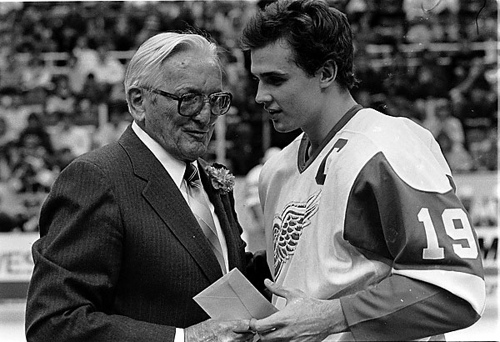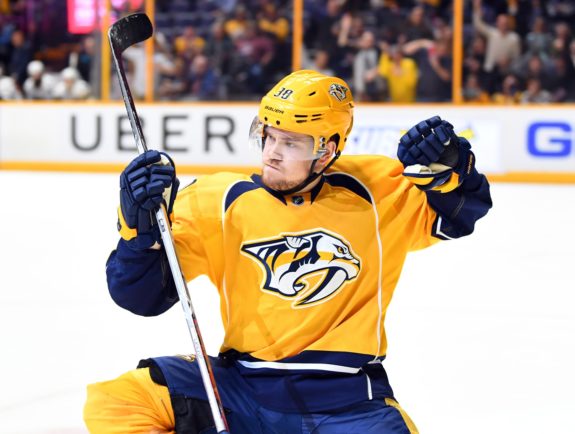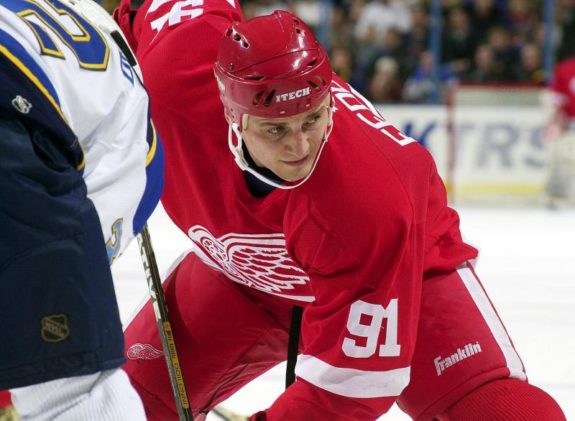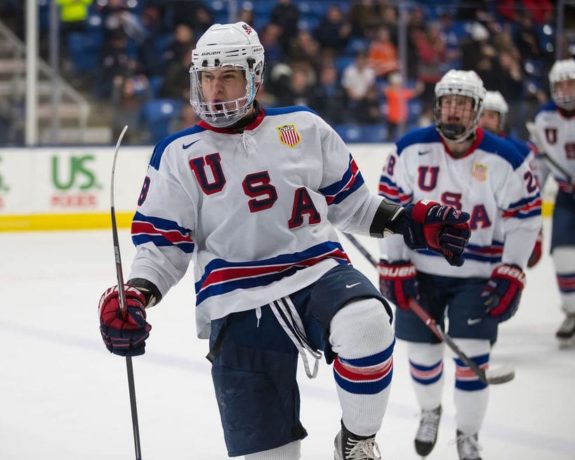This year’s NHL Entry Draft could likely be the most anticipated for Detroit Red Wings fans since the revolutionizing 1989 draft. The current Red Wings’ sufferings are almost a mirror image of the “Dead Wings” era leading up to their infamous 1996-97 Stanley Cup victory.
The Wings struggled through the draft year after year, ending up with players who never touched NHL ice or those who didn’t meet expectations. Even after selecting Steve Yzerman in the 1983 draft, the Wings’ woes continued. Much like the 2018 NHL Entry Draft is expected to do, the 1989 draft changed the tide for Detroit, which gives hope to the franchise and its followers.

Yzerman was a catalyst for the organization’s momentum shift, but it was many years before he even saw the fruits of his labor. Drafted fourth overall in 1983, Yzerman was immediately put in the NHL at the ripe age of 18 and proved immediately that he was worth his weight in gold by producing 87 points in 80 games. Yzerman is arguably the best captain in NHL history.
Wasted Picks Weighing Down Red Wings
Despite Yzerman’s otherworldly talent, the Red Wings still were well out of reach of Stanley Cup hopes. The team was smothered by bad picks who were ill-prepared for the challenges the NHL presented. Many picks in the drafts of the ’80s never saw NHL action and became, more or less, wasted space. The Dead Wings era made it glaringly obvious that the system was broken and even the select elite players Detroit had could not carry the team.
Taking a look at Detroit’s current position, it’s clear that Wings fans may be in for a bumpy ride. Similar to the Wings of the late ’80s and early ’90s, today’s team is stuck with draftees not producing or not being used to their full potential.
Paired with extended periods of time in lower leagues, many promising stars are not seeing their NHL hopes come to fruition, like Dominic Turgeon, for example. Selected 63rd overall in the 2014 Entry Draft, he has seen only five NHL games as an injury replacement. Meanwhile, Viktor Arvidsson was picked 112th overall by the Nashville Predators in the same draft and has seen 220 games.

Stunted Growth With Player Development
Unfortunately for Detroit, stunted player development is coming back to haunt them like in the days of old. Formerly, the Red Wings used the Adirondack Red Wings in Glen Falls, New York, as their AHL affiliate. Being more than an eight-hour drive from Detroit, or up to a three-hour flight, made moving players up and down a trial. The inability to closely oversee training of their developing athletes proved to be a tricky obstacle to overcome. Consequently, players were stuck in Adirondack or other national leagues, never having the chance to prove their worth.
To solve the problem, Detroit partnered with the Grand Rapids Griffins. Grand Rapids became the official affiliate of the Red Wings in 2002. The in-state affiliate has provided Detroit with a close connection to its developing players. For the upcoming draft picks, however, landing in Grand Rapids could potentially be their last stop. While having the convenience of a close connection with their farm team, Detroit is in no position to receive the talent as it becomes ready. With a loaded NHL roster, AHL level players are seemingly stuck, mirroring the Adirondack days.
2018 Sets Stage for Potential 1989 Draft Repeat
The biggest parallel of them all, however, is their position in the draft. The 1989 NHL Entry Draft changed the course of franchise history for the Red Wings. It looks like this season’s entry draft could be history repeating itself. The ‘89 draft consisted of some of the most well-known names in Red Wings history like Niklas Lidstrom, Sergei Fedorov, and Vladamir Konstantinov.
Setting the wheels in motion, Detroit composed their selections based on boldness and high-level skill. When referencing the selections of Lidstrom and Fedorov as spectacular, Dan Rosen of NHL.com also stated that “…but the other pieces make it legendary, perhaps the best in the history of not only hockey but all the major sports.” They chose players who were NHL-ready almost immediately who also possessed room to grow.

If the tales are true about this season’s draft, the Red Wings have an opportunity to turn the tide on a potentially dire situation. Mimicking the ‘89 draft, this season’s class is loaded with young players who have the on-ice maturation that could flow relatively smoothly into the NHL level. Young skaters who have the size and skill to land in the NHL in a short amount of time, give a plethora of options to the Wings should they choose to take a more immediate route.
Diamonds in the Rough
Though they won’t get their hands on players like Rasmus Dahlin or Andrei Svechnikov, there is great potential in Evan Bouchard or Oliver Wahlstrom. Missing the very top the draft has to offer may not be a bad thing. The ‘89 Wings passed up Pavel Bure to select Fedorov in the fourth round (74th overall). When put on the ice, he proved to be one of the best skaters in Red Wings history. Vladimir Konstantinov was also an 11th round pick, who, had his career not been halted by his accident, would be a Hall-of-Fame skater as well.
Yzerman was an elite player from the start, but it still took thirteen seasons of intense effort before he lifted the cup. The now infamous “Russian Five” didn’t exist till the mid-90s. Vyacheslav “Slava” Kozlov wasn’t drafted until 1990, Viacheslav “Slava” Fetistov was acquired in 1994-95, and Igor Larionov only joined the Wings when acquired from San Jose in 1995-96.

Alternately, the well-known “Grind Line” came as a result of seemingly random acquisitions. Kirk Maltby joined the Wings from Edmonton in 1996, Joe Kocur was drafted in 1983 along with Yzerman but didn’t see NHL action until the 1984-85 season, Darren McCarty wasn’t drafted till 1992, and Kris Draper was a cast-off trade to Detroit for $1 in 1993.
Rebuilds Don’t Happen Overnight
The long road to the Stanley Cup began in 1989 but was constantly being readjusted as the seasons progressed. Detroit took risks in the drafts, made the most of their picks but also pursued the outlandish deals for guys that grew into their legacy players. The upcoming developmental years will be painful and frustrating, likely more so for the players than the fans. There is hope for the future, however.
If the Wings can capitalize on the tools they have now and draft skaters that show NHL-ready qualities like in their early rebuild days, a younger, fresher team could emerge. Much like 1989, the Red Wings have foundational players but need a few missing pieces to spark the rebuild that is needed.